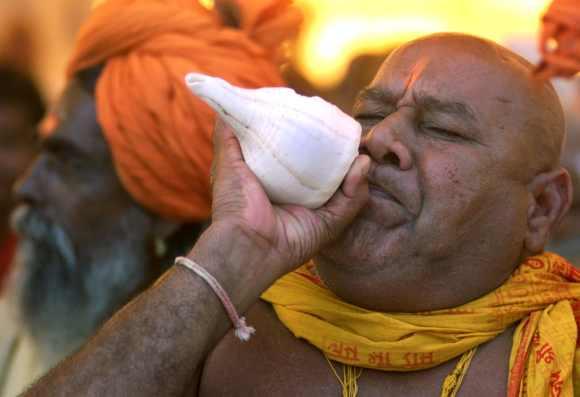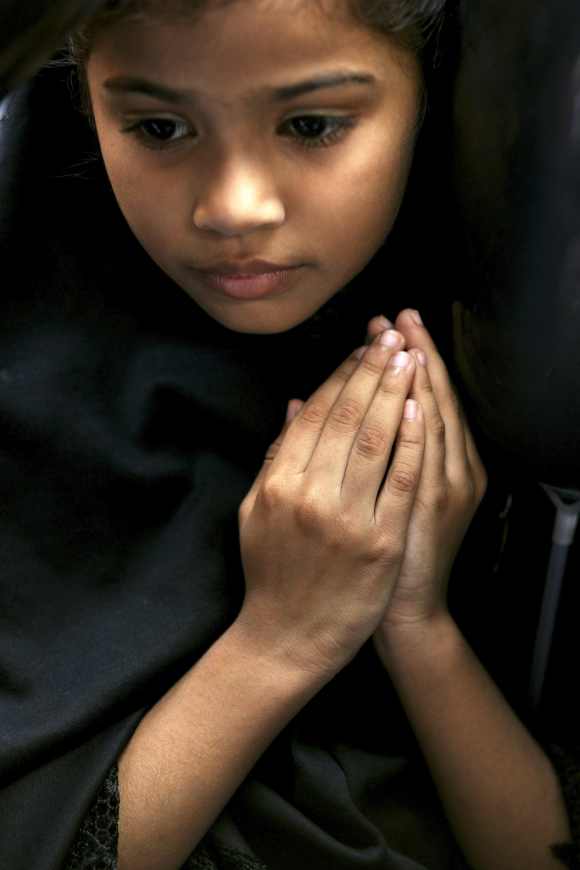20 years after the Babri demolition, Ayodhya stands disabled, dilapidated with no development and no jobs. Devjyot Ghoshal reports
In a small, dark three-roomed apartment, the head priest of India's most controversial temple sits with a lush beard and a careful splash of vermillion on his forehead.
"What happened that day shouldn't have happened. No religion preaches that any religious place should be broken down," says Satyendra Das in a low, solemn voice, about December 6, 1992.
"We got nothing from it. Ram Lalla now sits under a tarpaulin sheet, and this town has got zero. No public institutions, no jobs, no roads or even drains," he reflects, "we have lost more than we got back".
...
Ayodhya stands dilapidated and disabled
Image: A view of an empty street in AyodhyaPhotographs: Adnan Abidi/Reuters
In Ayodhya today there is religion, but little else. Twenty years after the triple domes of the Babri Masjid were brought down by a frenzied mob of right-wing Hindu activists, this town by the Sarayu river in the heart of Uttar Pradesh stands dilapidated and disabled, seemingly forgotten after playing its part as the epicentre of one of the biggest upheavals in independent India.
It is as if much of Ayodhya -- its Muslim population is about five per cent -- is holding its collective breath for one perceivable salvation: A temple for the Hindu god Ram on the disputed site. Yet, as history has repeatedly enforced, it is easier said than done. And in the process, Ayodhya has seemingly lost out on India's celebrated economic growth story, unleashed by the same prime minister P V Narasimha Rao, who sat in office during its darkest hour.
'Thought govt would protect minorities, didn't happen'
Photographs: Reuters
Mohammed Waqar, 35, recalls that December night vividly. In Class X then, Waqar found himself in the eye of the storm; his father, Haji Mahboob, is, as he was then, one of the petitioners in the Ayodhya title suit case. "There were two busloads of Provincial Armed Constabulary troops and even a fire engine, but they did nothing," he says, "We had thought the ruling government would protect the minorities. That didn't happen."
Waqar, the first MBA from his family, has now moved back to Ayodhya after a long stint of working in Dubai to support his father. "But I'll do something in Lucknow, not here," he adds, "There's nothing here."
In the past decade, the Faizabad district has seen its population grow by some 18 per cent. Ayodhya, too, has possibly had just as much. But it lacks the economic vibrancy abound merely seven kilometres away at the eponymous district headquarters: There are none of Faizabad's dusty ATM signs, air-conditioned automobile showrooms or even garishly labelled clothes shops here.
Instead, there are endless hawkers of spirituality -- photographs, amulets, brass artifacts -- and sweetmeats on the narrow lanes that lead up to the heavily-guarded site where the Babri Masjid once stood.





article